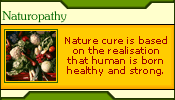|
Dharniya vega (description of suppressible urges)
Dharniya means the one that is to be suppressed and vega means
urge i.e. the urges natural or developed that need to be suppressed
by every living being are described in ayurveda as follows:
Suppressible urges of the mana (mind)
Lobha (greediness)
Shoka (depression)
Bhaya (cowardliness)
Krodh (anger)
Ahankar (ego)
Nirlajata (shamelessness)
Irshya (jealousy)
Suppressible urges of the sharir (body)
Par-pida (trouble others) or hinsa (violence in any form)
Par-Stree sambhog (to indulge in sexual intercourse other than one's
wife)
Chori (theft)
Suppressible urge of the vaachan (tongue)
Atyant kathor vachan (unpleasing talks)
Anvrut (to tell lies)
Vakasya akalyut (untimely talk)
If an individual is able to suppress these urges it is possible
for him to gain the pursharth chatusthya
Oja
To maintain the immune system of the body the essentiality is Oja,
as it is the essence of all the dhatus.
Panchabhoutic Siddhanta
To understand physiology, pathology and pharmacokinetics of ayurvedic
therapeutics the concept of panchabhoutic siddanth is of vital importance.
Phrithwi, Aapa, Teja, Vayu and Akasha are the five (Pancha) basic
elements that are the constituents of all living matter. Together
these five are called Panchamahabhoota.
Purusha
The "Soul" lives in the body so it is considered as purusha,
as anyone who live in this home i.e. body is called purusha. In
ayurveda the body has no meaning without purusha (soul). Whole ayurveda
is compiled for the betterment of karma purusha and thus it holds
great importance in ayurveda.
|









